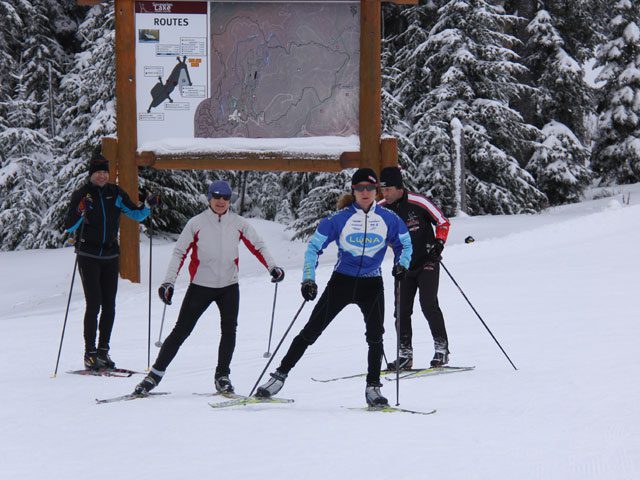Cross-country ski your way to better cycling fitness
This winter hit the snowy trails so you'll be in top shape for spring.

Jack Sasseville
I raced as a cross-country skier for 35 years. During that time, summer sports, such as cycling, were just there to help me to become a faster skier. Now that I race primarily on my bike in time trials and cyclocross events, I use XC skiing to get faster and fitter for the rides.
The best way to get better as a cyclist is to ride. More miles, for the most part, will make you faster. However, to get the necessary amount of training in the winter means spending hours each day in the basement sweating on a trainer or riding in the snow and cold outside. For me, neither of these options are as much fun as XC skiing.
Using XC skiing for cross-training in the winter is an excellent way to increase your base fitness. It is also a great way to work out those core and upper-body muscles that barely get used during riding. In fact, there is research, such as VO2 max studies by Swedish exercise physiologist Per-Olof Åstrand, that indicates XC skiers are the best aerobic athletes because they use their full body for propulsion. Even if you have never skied much before, you can benefit from hitting the trails. Taking a lesson from a friend or an instructor to become more efficient is always a good idea. You will learn how to balance on your skis, which will help you to balance on your bike.
Most cyclists prefer skate skiing to classic skiing. Skate skiing is faster and uses the leg muscles more than the upper-body muscles, so it is perfect cross-training. Classic skiing is great if you know how to do it and understand grip waxing. A good recreational skating package of skis, boots, poles and bindings will cost you between $600 and $800 – less than a decent set of wheels. At this price range, you would be getting something that is the XC-skiing equivalent of a $3,000 to $4,000 bike. If you want top-end equipment, you will be looking at $1,500 to $2,000 for the package – still in the range of a set of high-end carbon fibre wheels.
Regardless of what you decide to buy, you should go to a reputable XC ski retailer for advice and fitting. It’s important that the skis, boots and poles fit you and your skiing ability. Many ski areas hold demo days, where you can try the latest equipment before you buy.
For the most part, you should use XC skiing and other cross-training activities to help build your aerobic base. Long skis at low intensity are best. High-intensity training is very specific to XC ski intervals; the intensity will help your skiing more than your riding.
Pro mountain biker Catharine Pendrel uses XC skiing as part of her winter training regimen. “I typically ski three-times a week, working up to three- to four-hour skis through the season,” Pendrel says. “To ensure quality before I am ready for longer skis, I will do double days featuring skiing and the trainer, or skate skiing and classic skiing, even a ski and snowshoe. I alternate those aerobic days with focused trainer and weight days.”
There you have it. So come out and join us on our skis this winter and improve your riding, too.

